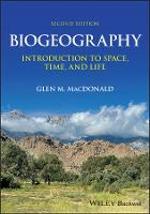Introduce students to the diversity embraced by the discipline of biogeography, revised and updated throughout Biogeography: Space, Time and Life provides a comprehensive introduction to the study of large-scale geographic distributions of life, focusing on ecology, evolution, physical geography and conservation. Now in its second edition, this award-winning textbook illustrates key concepts in biogeography using engaging empirical examples of modern plant and animal distributions, long-term evolutionary history and current conservation challenges. With an accessible style and clear structure, Biogeography defines fundamental terms from biology and physical geography, describes ecological biogeography and the biological features of the physical environment, explains key concepts in historical biogeography, explores the Earth’s diverse biogeographic subdivisions, current issues in conservation and more. Student-friendly chapters cover topics including biological interactions, speciation and extinction, changing continents and climates, human evolution, modern biodiversity, the relationship between humans and plants, animals and other organisms, and the role of biogeography in conservation. Introduces basic concepts in the study of animal and vegetation distributions, including various human and environmental impacts on these distributions Examines how biological factors such as heat and predation impact different species of plants and animals Features short biographical sketches of major figures in the field and examples of the natural histories of various species Considers the application of biogeographic theory and techniques for the benefit of conservation and sustainability Includes a companion website for students, as well as an instructor’s site with supplementary teaching resources Designed for students across a wide range of disciplines, from the biological and physical sciences to the social sciences and humanities, Biogeography: Space, Time and Life, Second Edition is an excellent textbook for undergraduate courses in biogeography, Earth systems science, and environmental studies.

Biogeography : introduction to space, time, and life
ISBN: 9781119904588
Format: Paperback
Publisher: Wiley-Blackwell
Origin: US
Release Date: February, 2025


